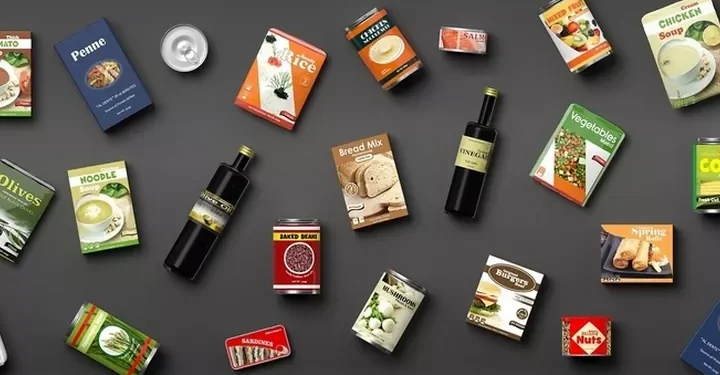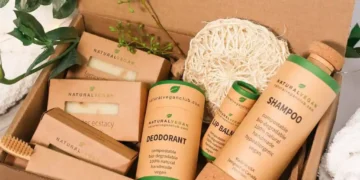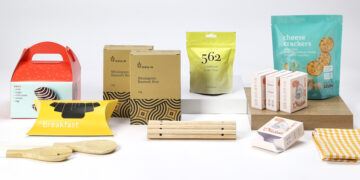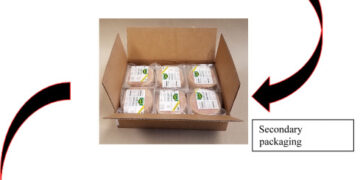In the last decade, there has been a major shift in consumer behaviour. They are no longer willing to compromise on taste, quality or convenience when it comes to their food. This has led to an increase in demand for more innovative and convenient ways of storing and serving food. The increased demand has led manufacturers to implement changes in the design of food packaging.
These shifts have had a significant impact on manufacturers who are now required to meet increasingly high standards for the products they produce. Understanding these trends will help you identify opportunities and risks within your business so that you can take advantage of them instead of being dragged down by them. Read on to learn more about this topic as well as understand where these trends are headed in the future.

Air Tightness
Customers are now more concerned about air tightness than ever before. They are looking for more air-tight packaging, which is easier to seal and stores for longer. Companies are now using a variety of technologies to ensure that their food packaging is airtight. These technologies range from an inner layer that is designed to expand in response to the atmosphere to creating a vacuum seal with a vacuum pump.
As food is perishable and susceptible to contamination, the container needs to be airtight. Food manufacturers need to look into their retail packaging and ensure that they meet stringent requirements when it comes to air tightness. The challenge for manufacturers is to find a packaging solution that can meet food requirements and meet the aesthetic standards of their customers.
BPA-Free Packaging
The use of bisphenol A, or BPA, plastic has come under severe scrutiny in recent years. This chemical has been linked to a wide range of health issues including heart disease, memory loss, and hormonal issues in both humans and animals. This has led to an increase in demand for BPA-free food packaging. BPA-free food packaging can be used to store food that is particularly sensitive to this chemical.
BPA-free food packaging is made from a variety of materials. HDPE plastic is a common material used to make canned foods, glass bottles, and other packaged foods. It is highly durable, resistant to bending and breaking, and resistant to chemicals. Lower-density polyethene (LDPE) is often used for drink bottles, food bags and food wraps.
Micro-Air Bubbles
Micro-air bubbles are microscopic air pockets that are found inside food packaging. These micro-air bubbles are naturally occurring and can help food retain its freshness. Micro-air bubbles expand when the food inside is heated, creating a protective barrier. This barrier delays the spoiling process, making it possible for food to stay good for a significantly longer time.
Micro-air bubbles are found in the food packaging of many popular products like juices, milk, and dairy products. Some people assume that products that come in glass bottles or containers use micro-air bubbles. However, this is not always the case. Many foods that are found in plastic or paper packaging can also contain micro-air bubbles. While micro-air bubbles are found in many different types of food, they are most commonly found in dairy products, fruit juices, condiments and ice cream.
What companies need to do is provide consumers with clear information about the micro-air bubbles contained within the product packaging. This can be done either by labelling the product or including a nutritional facts panel that explains the number of micro-air bubbles contained in the product.

Stainless Steel
Food packaging made from stainless steel is a staple in many households. Not only is it easy to clean, but it can also be reused many times without showing any signs of wear and tear. Stainless steel is also an eco-friendly material, which makes it an ideal choice for food packaging.
Stainless steel is a highly durable material that offers excellent resistance to heat, light, chemicals, and corrosion. It is ideal for use in food packaging because it can be recycled once used, making it a more sustainable choice for consumers. Manufacturers are also using more stainless steel in food packaging because it has a rust-free finish that helps create appealing aesthetics.
Biodegradable Packaging
Biodegradable packaging is a relatively new trend in the food packaging industry. It aims to make sustainable packaging with a compostable or biodegradable composition. This packaging is made from plant-based materials or natural plant oils that break down over time and become soil-enriching organic matter. Biodegradable packaging is only slightly more expensive than conventional plastic packaging. It is also certified compostable and biodegradable, so it meets the requirements of manufacturers and distributors.
However, on average it takes 28 days for biodegradable packaging to break down, compared to 12 for compostable packaging. Biodegradable packaging is most commonly used for soft drinks, drinks with ice, and acidic foods like fruit juices. It could be used for other products as well, like oils or condiments, but this trend is still developing.
OLED Displays For Food Packaging
OLED displays for food packaging are becoming more common. These displays are made from organic light-emitting diodes (OLEDs). OLED displays are unique because they are flexible and can be rolled up. They also have a low energy consumption, making them a great choice for portable devices like smartphones and watches.
OLED displays can also be used to make barcodes more readable, which can help improve the accuracy of scanning. With the advancements in technology, OLED displays are now more reliable and durable than ever before. This has led to an increase in demand for OLED displays for food packaging. OLEDs are well suited for this use because they are durable, lightweight, and flexible. They also have a long lifespan, making them an ideal choice for use in food packaging.

Future Trends
The future trend of food packaging will continue to be driven by consumer demand. Consumers want food products to be more convenient and hygienic. They are looking for more air-tight packaging, which is easier to seal and stores for longer. They are also looking for more biodegradable packaging that is easy to break down and composts.
These trends will continue to drive manufacturers to implement changes in the design of food packaging. The future trend in food packaging will also be influenced by emerging technologies. New technologies are making their way into the food packaging market, such as 3D printing. These technologies can be used to create customised and bespoke packaging solutions.
Bottom line
Food packaging has seen quite a bit of evolution over the last century. These changes have been a result of advancements in technology as well as the evolving needs and want of consumers. Manufacturers will continue to create innovative new solutions for food packaging, and this trend will only continue to expand.
These trends will have significant impacts on manufacturers who are now required to meet increasingly high standards for the products they produce. Understanding these trends will help you identify opportunities and risks within your business so that you can take advantage of them instead of being dragged down by them.
















